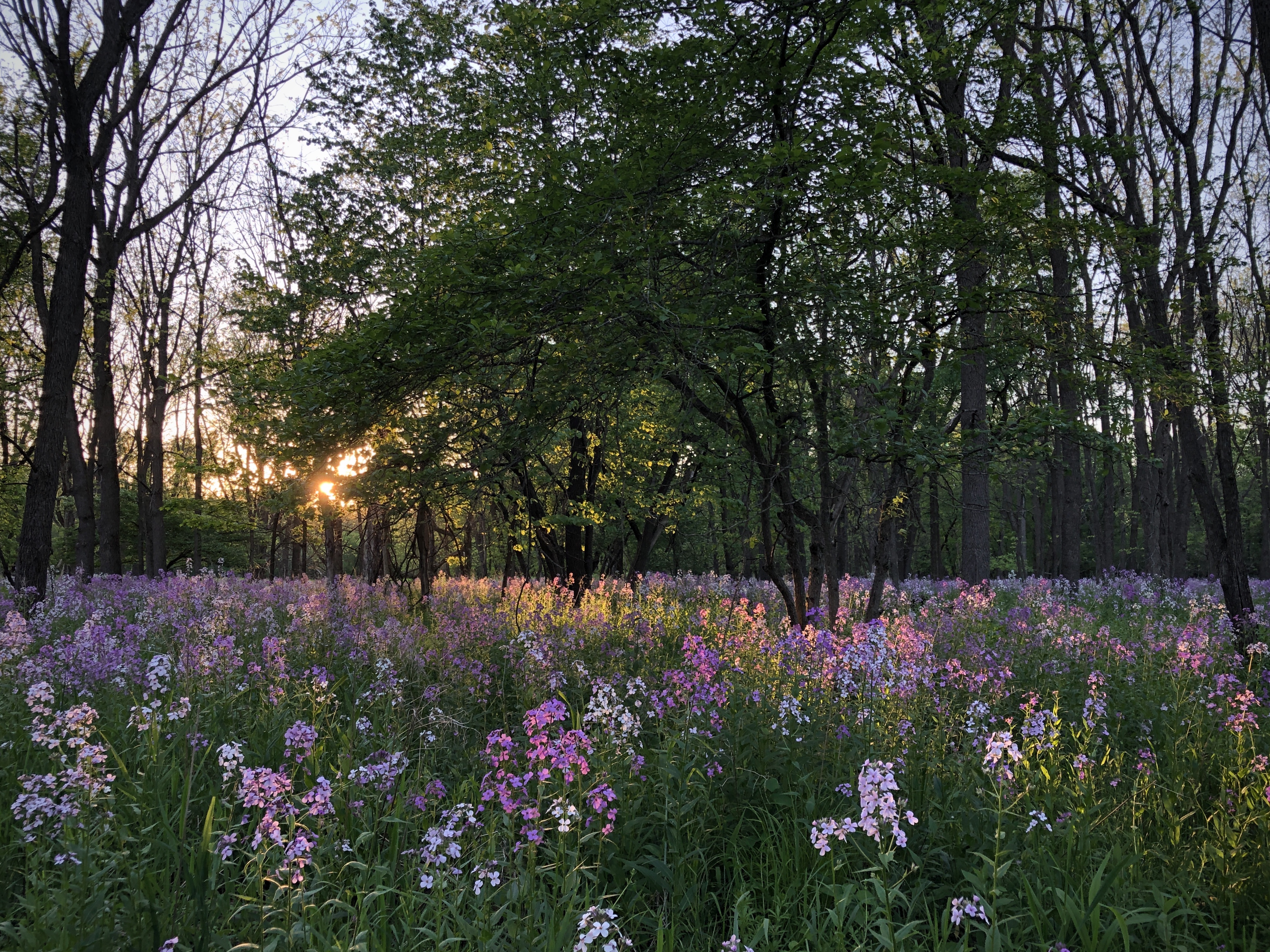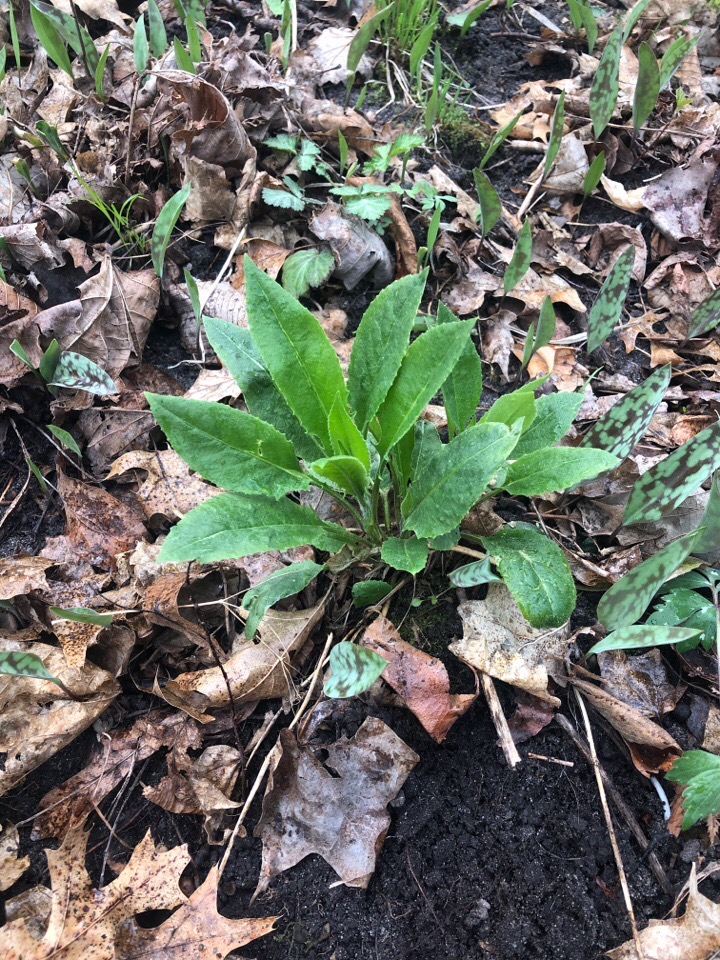
There's a plant growing round these parts and despite it being considered an invasive species, it's rather extraordinary. I've been wild-foraging in the woods near where I'm living in Southern Minnesota since early spring and I've been so curious about this one all season, when it was just a wee leafy green... like this next photo.

It has so many names!
Often, when a plant has many names, it tells you there's something quite revered about it.
"Hesperis matronalis is an herbaceous plant species in the family Brassicaceae.
It has numerous common names, including: dame's rocket, damask-violet, dame's-violet, dames-wort, dame's gilliflower, night-scented gilliflower, queen's gilliflower, rogue's gilliflower, summer lilac, sweet rocket, mother-of-the-evening, and winter gilliflower." – Everipedia
How can you not love the name 'rogue's gilliflower'?
...but what's a gilliflower?
Well: A gilliflower or gillyflower is:
- The carnation or a similar plant of the genus Dianthus, especially the Clove Pink Dianthus caryophyllus.
- Matthiola incana, also known as stock.
- Several other plants, such as the wallflower, which have fragrant flowers.
How about some gilliflower wine?
"An old recipe for gilliflower wine is mentioned in the Cornish Recipes Ancient & Modern dated to 1753:
To 3 gallons water put 6lbs of the best powder sugar; boil together for the space of 1/2 an hour; keep skimming; let it stand to cool. Beet up 3 ounces of syrup of betony, with a large spoonful of ale yeast, put into liquor & brew it well; put a peck of gilliflowers free of stalks; let work fore 3 days covered with a cloth; strain & cask for 3-4 weeks, then bottle.— Martin, Edith, Cornish Recipes Ancient & Modern 22nd Ed" – Everipedia
The smell is intoxicating at dusk, which lends to some of its mystique, and its many names. It is prized for its scent, and was once used widely in perfumery. It seems to have escaped from English gardens, arriving in North America with the colonists. Best I can figure it comes from 'Eurasia', which is a hopelessly broad area.

It's edible, and closely related to arugula... so if it's a problem plant in your area, eat it! I'd like to make an essential oil and hydrosol from the flowers, but I need to acquire a still first. I read that the seeds can be sprouted and eaten. I will investigate further.

Not a bad place for a stroll eh?
I'll make time for more plant profiles as the days go by.
For now, that's what's blooming in these parts!
Peace, and @lovejoy
Hey Brandon. This post was a good read, and you got some beautiful shots! I did not know about this plant at all, and will be looking out for it this spring. The idea of extracting some sort of essence from the flower using a still sounds like a fascinating project.